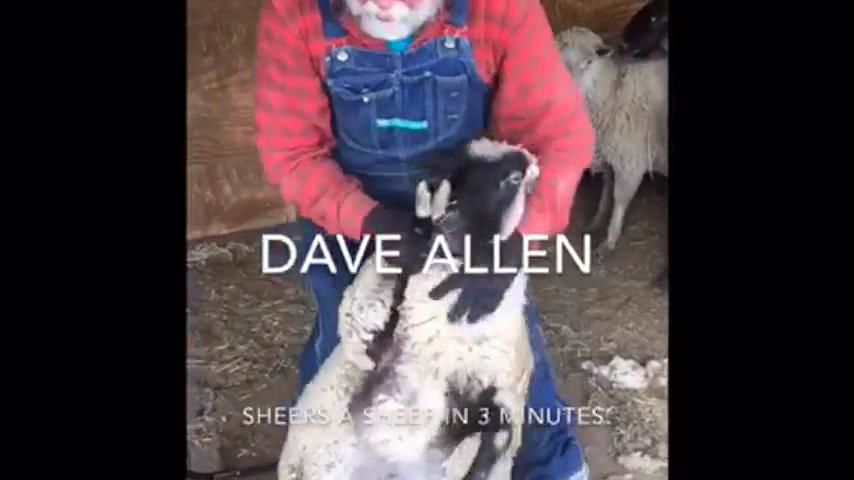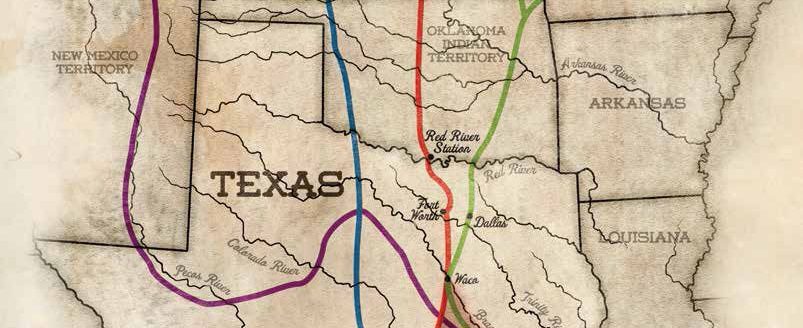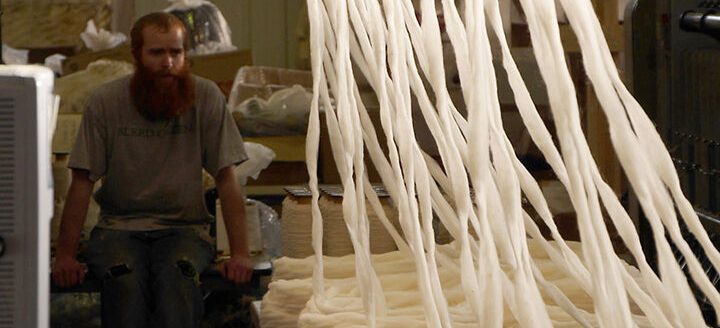Dave Allen’s shear legacy

Dave Allen and his trusty set of shearers have been together for 40 years, clipping sheep across America and pruning a tradition of hard work, dedication and a lot sheep. Allen, who lives near Byron, Oklahoma, says his family has had sheep since he was about 2 years old. The Allens were known specifically for their Dorset sheep, but over the years many black face and crossbreds made their way into the flock. At 17 years old, Allen and his family were in a predicament, there was a shortage of sheep shearers.
“I literally couldn’t get a sheep shearer to come,” Allen said.
Out of necessity, Allen sheared his own sheep for several years in a row and one day a group of the local sheep producers were discussing who could shear their sheep that year.
“I smarted off that I’d shear them if I had a motorized shearing rig,” Allen explained.
One of the sheep owners happened to have one and that was how Allen turned a one liner into a four-decade career. Around this time, Allen was working at the Salt Plains National Wildlife Refuge and would get off work and shear sheep until dark and on the weekends. Word quickly spread that Allen was the go-to sheep shearer for the area and before long he was shearing sheep all over the county, surrounding areas and eventually the central United States.
A lot of lamb chops
Allen says he believes he has sheared at least 350,000 sheep conservatively in his career. He says the size of sheep these days really make sheep shearing difficult. When his career first started, sheep were two-thirds the size they are now and the extra weight and surface area really add up.
“It takes a toll on the body,” he said. “They’ve just got them too big. I used to shear 100 to 150 sheep a day and never even feel like I worked. Nowadays it’s tough to get 80. If you think of the extra square inches on these big sheep, it’s almost like shearing two sheep instead of one.”
At the height of his career, when a lot of sheep feedlots existed, Allen estimated he was shearing about 20,000 sheep a year. Allen says when he first started ewes were sheared for $1.50 each, then it went up to $1.85, then $2, then $2.50, then all of a sudden it went to $4. Allen recounts his record high count of sheep sheared in a day at 202. Since then, the shearing numbers have decreased along with the sheep numbers in general. When he first started, Allen was shearing about 5,000 sheep a year for the first five years, then it jumped to about 10,000 a year for 10 years. Nowadays he is enjoying a lighter workload at about 4,000 sheep a year.
Allen says one sheep yields an average of about 8 pounds of wool, depending on the breed. He estimates he has sheared at least 2,800,000 pounds of wool in his lifetime. Apart from being paid to shear the sheep, Allen is also a field representative for the wool. He collects it and sells it to processing plants. The type of sheep Allen usually shears are meat animals and not raised for high quality wool used for clothing; however, the wool is still put to use. Some of it is exported and used for items such as carpets and rugs. Allen says it has also been used to clean up oil spills. He says on average he sells the wool to the plants at about 20 cents a pound.
Lamb legacy
Allen is also a competitive sheep shearer. He has been the Oklahoma sheep shearing champion and competed in numerous shearing competitions in several states. Competitors are judged on speed, second cuts into wool, manner of handling and condition of the fleece. In fact, he is so interested in agriculture competitions, he started serving on the Alfalfa County Fair board nine years ago and has always been a supporter or 4-H and FFA livestock projects.
Agriculture instructors from Alfalfa and the surrounding counties have Allen on speed dial around fair time. He has rough sheared the student’s show lambs for free for years. What might take a student, parent or teacher more than an hour can be done in less than three minutes when Allen has the clippers. After the sheep have been rough sheared, they are put back on a sheep stand and slick sheared by the exhibitor for the show ring.
However, with all the work he does with 4-H and FFA members, Allen sees the ways of the past slowly fading away and wonders what the future of the sheep industry and sheep shearers will become.
“It’s getting tougher and tougher, the older guys are passing away and none of the young guys want to start shearing,” Allen explained. “We’ve lost a lot of producers over the last five years. It really hurt the sheep industry when the wool payment program was taken away.”
This program allowed producers to sell wool in the open market and receive a payment from the government based on a percentage of sales markets. The program was designed to increase domestic wool production.
“The government is keeping that money, where it should be going to the producers because they are still charging that tariff. The future of the sheep industry is kind of bleak. For shearers you’ve got to travel so much to get to the sheep, plus hotel rooms and eating out.”
Even though he has considered retiring, Allen knows he was would miss the profession he is so accustomed to and wonders if he will ever be able to put down the shears entirely.
“I don’t regret it, even though I’ve ached so bad some days that I couldn’t straighten out to get to the house,” Allen said with a chuckle.
You cannot pull the wool over Allen’s eyes, he knows family, agricultural traditions and a much needed skill equal the satisfaction of a well-oiled life, with lanolin of course.
Lacey Newlin can be reached at [email protected].


